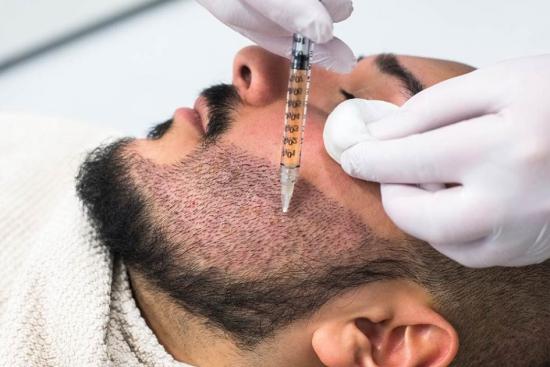A full, well-groomed beard can dramatically enhance a man’s appearance, but achieving it sometimes requires a Beard hair transplant in Islamabad, especially for men with patchy or thin facial hair. While the procedure itself is crucial, proper aftercare is equally important to ensure faster healing, optimal graft survival, and natural-looking results.
In this blog, we’ll discuss essential aftercare tips, post-procedure practices, and lifestyle adjustments that help patients recover quickly and enjoy a healthy, full beard.
1. Follow Your Surgeon’s Instructions
After a beard hair transplant, every patient receives personalized post-procedure instructions. Adhering to these guidelines is critical because they are tailored to the specific technique used, such as FUE, DHI, or FUT. Key aspects typically include:
- Cleaning the recipient and donor areas as instructed
- Avoiding excessive touching or scratching of transplanted follicles
- Following prescribed medication schedules, including antibiotics or anti-inflammatory drugs
Strict compliance with these instructions ensures proper healing and reduces the risk of infection or graft loss.
2. Gentle Cleaning and Washing
Proper hygiene is essential for faster healing:
- Initial Days: Avoid washing the face for the first 24–48 hours unless advised otherwise by your surgeon.
- Mild Cleansers: Use gentle, non-fragranced cleansers to clean the beard area. Avoid scrubbing.
- Pat Dry: Gently pat the area dry with a soft towel instead of rubbing.
Cleanliness reduces the risk of infection and promotes healthy follicle growth.
3. Avoid Touching or Scratching
It is natural to feel itching or irritation during the healing process, but touching or scratching transplanted follicles can:
- Dislodge newly implanted grafts
- Increase the risk of infection
- Delay healing
Patients are advised to resist the urge to touch the area and follow any recommendations for soothing discomfort, such as cool compresses.
4. Protect the Beard Area from Sunlight
Direct sunlight can irritate the healing skin and affect follicle survival. Tips for sun protection include:
- Avoiding sun exposure for at least 2–3 weeks post-transplant
- Wearing a soft scarf or loose clothing to cover the beard area when outdoors
- Using a surgeon-recommended sunscreen after the initial healing period
Protecting the skin ensures that transplanted follicles remain healthy and reduces the risk of discoloration or scarring.
5. Avoid Physical Strain and Excessive Exercise
Intense physical activity can increase blood flow and sweating, which may irritate the healing area. Recommendations include:
- Avoid heavy workouts for at least a week
- Refrain from activities that cause friction in the beard area, such as contact sports
- Opt for light, low-impact exercise until the area fully heals
These precautions help maintain graft integrity and minimize inflammation.
6. Proper Nutrition for Faster Healing
A balanced diet supports recovery and promotes hair growth. Key nutritional considerations include:
- Protein-Rich Foods: Eggs, fish, chicken, and legumes aid in tissue repair.
- Vitamins: Vitamin C, Vitamin E, and B-complex vitamins accelerate healing and boost follicle health.
- Minerals: Zinc and iron support new hair growth and improve graft survival.
- Hydration: Drinking sufficient water keeps the skin and follicles healthy.
Healthy nutrition enhances the body’s natural healing mechanisms, contributing to better beard density and quality.
7. Avoid Smoking and Alcohol
Both smoking and excessive alcohol consumption can hinder the healing process:
- Smoking: Reduces blood circulation, affecting oxygen and nutrient supply to transplanted follicles.
- Alcohol: Can increase inflammation and delay tissue repair.
Refraining from these substances during recovery ensures a faster and more effective healing process.
8. Follow-Up Appointments
Post-transplant follow-ups are essential to monitor healing and ensure optimal results:
- Surgeons check the recipient and donor areas for signs of infection or poor healing.
- They assess graft survival and growth progress.
- Any minor adjustments or advice for continued care are provided.
Regular follow-ups guarantee that patients receive timely interventions if needed and maintain healthy, dense beard growth.
9. Patience and Realistic Expectations
Beard hair transplant results take time. Patients should expect the following timeline:
- Initial Shedding: Transplanted hairs may fall out within the first 2–3 weeks, which is normal.
- New Growth: New hairs start growing in 3–4 months.
- Full Results: Final beard density and growth are visible after 8–12 months.
Patience and adherence to aftercare guidelines ensure the transplant yields a natural, permanent, and dense beard.
10. Optional Treatments to Enhance Recovery
Some clinics offer adjunct therapies to promote healing and hair growth:
- PRP (Platelet-Rich Plasma): Stimulates transplanted follicles for faster growth and stronger hair.
- Low-Level Laser Therapy (LLLT): Increases blood flow to follicles and reduces inflammation.
- Topical Treatments: Surgeon-recommended creams or serums can help improve skin and hair quality.
These complementary treatments, when combined with proper aftercare, optimize results and minimize recovery time.
Conclusion
A beard hair transplant in Islamabad is a highly effective solution for men looking to achieve a full, well-defined beard. However, post-procedure care plays a critical role in ensuring faster healing, higher graft survival, and natural-looking results. By following surgeon instructions, maintaining hygiene, protecting the area, avoiding harmful habits, and adhering to proper nutrition, patients can enjoy a smooth recovery and long-lasting beard growth.
For those seeking expert guidance and advanced post-procedure care, Dynamic Aesthetic Clinic offers skilled surgeons, modern technology, and personalized solutions to ensure your beard hair transplant is successful and your results look natural. Visit Dynamic Aesthetic Clinic today to schedule your consultation and take the first step toward a thicker, healthier, and perfectly groomed beard.





Comments